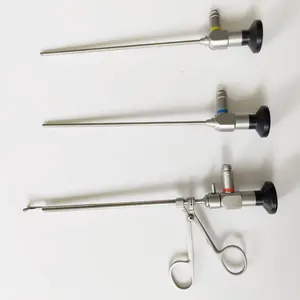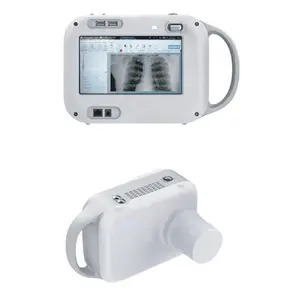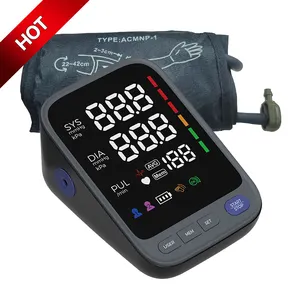Popular in your industry












































































Related Searches:
























































































































































Top categories
About 0 degree ent endoscope
The relentless pursuit of medical innovation has brought forth a transformative tool in the realm of otolaryngology: the 0 degree ENT endoscope. This cutting-edge instrument has not only traced its lineage back to the rudimentary designs of ancient times but has also become a cornerstone in modern medical procedures. With its straight viewing angle and high-definition imaging, the 0 degree ENT endoscope offers unparalleled precision in ear, nose, and throat surgeries. Its introduction has marked a new era in diagnostic and surgical accuracy, minimizing invasiveness and maximizing patient outcomes. This article delves into the revolutionary impact of these endoscopes, exploring their evolution, applications, and the technological strides that have redefined what is possible in the delicate field of ENT surgery.
The Evolution of Endoscopes in Medicine
The journey of endoscope development is a testament to human ingenuity, tracing back to ancient times. Initial concepts of endoscope-like instruments were found in the ruins of Pompeii, suggesting their use in Greek and Roman periods. The term 'endoscope' was first coined by Antoine Jean Desormeaux in 1853, following Philip Bozzini's early 19th-century efforts with the Lichtleiter. The progression of endoscopic technology saw significant milestones, such as Dr. Adolph Kussmaul's pioneering examination of the stomach in 1868 using a rigid tube, and the subsequent invention of the cystourethroscope by Max Nitze and Josef Leiter. A major breakthrough came with the flexible gastroscope in 1932, which allowed for more intricate examinations due to its bendable design. This evolution set the stage for the development of specialized endoscopes, including the 0 degree ENT endoscope, revolutionizing medical diagnostics and procedures.
Understanding 0 Degree ENT Endoscopes
The 0 degree ENT endoscope is a specialized instrument designed for ear, nose, and throat (ENT) procedures. As part of the broader category of sinuscopes, these endoscopes are characterized by their straight, or 0 degree, viewing angle. This design is crucial for direct visualization in sinus surgery, allowing for a straightforward view of the surgical field. The 0 degree endoscope's rigid structure is optimized for durability and precision, providing clear, unobstructed images that are essential for accurate diagnosis and surgical intervention. The outer diameter and working length of these endoscopes are meticulously calibrated to accommodate the anatomical constraints of nasal cavities, enhancing maneuverability and access to various sinus passages. The integration of high-definition lens systems in these instruments further elevates the clarity of the images, which is vital for the intricate work required in ENT surgical procedures.
Applications of 0 Degree ENT Endoscopes in Modern Procedures
The advent of 0 degree ENT endoscopes has significantly advanced otolaryngology, particularly in endoscopic ear surgery (EES). These endoscopes offer a wide field of view, enabling comprehensive inspection of the middle ear without the need for extensive tissue removal. Their application extends to the careful examination of the mesotympanum and epitympanum, areas that are challenging to access with traditional microscopes. The 0 degree endoscope's superior visualization capabilities facilitate the management of middle ear diseases, such as cholesteatoma, by allowing for a less invasive approach and preserving healthy tissue. This technology has proven particularly beneficial in accessing difficult areas like the sinus tympani, where its wide-angle view and the use of angulated endoscopes contribute to more confident surgical planning and execution. Furthermore, the endoscope's enhanced view aids in the detailed assessment of the tympanic isthmus and Prussak’s space, crucial for understanding the ventilation pathways of the middle ear and the development of retraction pockets and cholesteatoma. The 0 degree ENT endoscope has thus become an indispensable tool in modern otolaryngological procedures, offering a blend of precision and minimal invasiveness.
Key Features and Technological Advancements
The advanced endoscopic procedures highlight the significant technological advancements in the field of endoscopy. Among these, the use of endoscopes equipped with high-definition cameras exemplifies the key features that have revolutionized medical diagnostics. These endoscopes provide a detailed view of the digestive tract, which is critical for both diagnosis and treatment.
Endoscopic ultrasound (EUS) combines endoscopy with ultrasound to produce superior images of the digestive tract and surrounding structures. The EUS scope, or echoendoscope, is a pivotal innovation, allowing not just for visualization of the tract lining but also for examination of the tract wall and adjacent areas such as the liver and pancreas. This dual capability of EUS can reveal conditions that other imaging tests might miss, making it a powerful tool for staging cancers of the esophagus, stomach, pancreas, and rectum.
The precision of these instruments is further enhanced by their ability to perform fine-needle aspiration, which can provide additional diagnostic information. While EUS offers a comprehensive view, it is acknowledged that its penetration depth is limited, though recent improvements in imaging technology have expanded its capacity to evaluate adjacent organs. This balance of detailed internal imaging with some external assessment underscores the nuanced capabilities of modern endoscopes.
Material and Design Considerations
In the realm of medical device manufacturing, materials and design are pivotal, especially for 0 degree ENT endoscopes. These devices leverage advanced polymers like PTFE, known for its exceptional lubricity and low friction, which is crucial for the delicate navigation required in endoscopic procedures. PTFE's biocompatibility and ability to withstand a wide range of temperatures (-328 °F to 500 °F) make it an ideal choice for medical applications. Furthermore, the adaptability of PTFE allows for the creation of multi-lumen structures essential for passing various instruments simultaneously.
Another key material in the construction of 0 degree ENT endoscopes is Liquid Crystal Polymer (LCP). LCP's mechanical strength and heat tolerance are beneficial for devices that must endure the rigors of autoclaving without compromising structural integrity. Additionally, LCP's chemical inertness ensures that the endoscope remains unaffected by the harsh environments it encounters within the body. The non-metallic braiding materials, such as those made from LCP, offer flexibility and MRI compatibility, which are critical for a wide range of diagnostic and therapeutic procedures.
Polyether ether ketone (PEEK) is also utilized for its high strength-to-weight ratio and thermal stability, withstanding temperatures up to 500 ºF. PEEK's resilience to high burst pressures and its thermoformable nature allow for precise design tailoring, enhancing the endoscope's performance. The integration of these materials into the design of 0 degree ENT endoscopes results in devices that are not only effective in diagnosis and treatment but also ensure patient safety and comfort during procedures.
Advantages of Using 0 Degree ENT Endoscopes
The utilization of 0 degree ENT endoscopes in ear surgery has revolutionized the field, offering a plethora of advantages. These endoscopes provide a wide field of view, enabling surgeons to see and dissect around corners, thus revealing 'hidden recesses' of the middle ear that were previously inaccessible with standard microscopic techniques. This enhanced visibility is crucial for identifying and preserving healthy tissue, which can lead to improved patient outcomes and satisfaction.
Furthermore, the minimally invasive nature of endoscopic ear surgery (EES) with 0 degree endoscopes results in less local tissue trauma. This translates to reduced bleeding during surgery, as the need for extensive tissue removal is minimized. The ability to perform surgery with a one-handed technique, while initially perceived as a limitation, has been refined over time, and the benefits of reduced postoperative pain and quicker recovery times are significant.
Additionally, the endoscope's ability to expose areas such as the retrotympanum, hypotympanum, anterior mesotypanum, epitympanum, and antrum without extensive bony removal or external incisions is a game-changer. This leads to a decrease in residual and recurrent disease rates, less postoperative discomfort, and eliminates the need for external incisions and bulky mastoid dressings, further contributing to the patient's comfort and the procedure's overall efficiency.
Integration in the B2B Marketplace: Alibaba.com's Role
The integration of 0 Degree ENT Endoscopes into the B2B marketplace is exemplified by platforms like Alibaba.com, which facilitate the connection between manufacturers and business buyers. Alibaba.com offers a diverse range of these specialized medical instruments, ensuring that practitioners can find the exact tools they need for their medical procedures. With a substantial selection of products available, the platform ensures that healthcare professionals can browse and compare different models and features to find the endoscope that meets their specific requirements. This accessibility is crucial for the advancement of medical practices and the enhancement of patient care.
Conclusion
In conclusion, the 0 degree ENT endoscope represents a significant leap forward in medical technology, offering a synthesis of precision, efficiency, and minimal invasiveness. From its historical origins to its modern applications, this instrument has reshaped the landscape of otolaryngological procedures. Its advanced imaging capabilities, coupled with the use of robust materials like PTFE, LCP, and PEEK, have enhanced the safety and comfort of patients while providing surgeons with unprecedented views of the middle ear and beyond. The advantages of using these endoscopes are manifold, including reduced surgical trauma, lower rates of residual disease, and expedited recovery times. Furthermore, the accessibility of these specialized tools through platforms like Alibaba.com underscores the importance of global B2B marketplaces in the dissemination of medical advancements. The 0 degree ENT endoscope stands as a testament to the progress in medical sciences, promising a future where precision and patient care go hand in hand.























